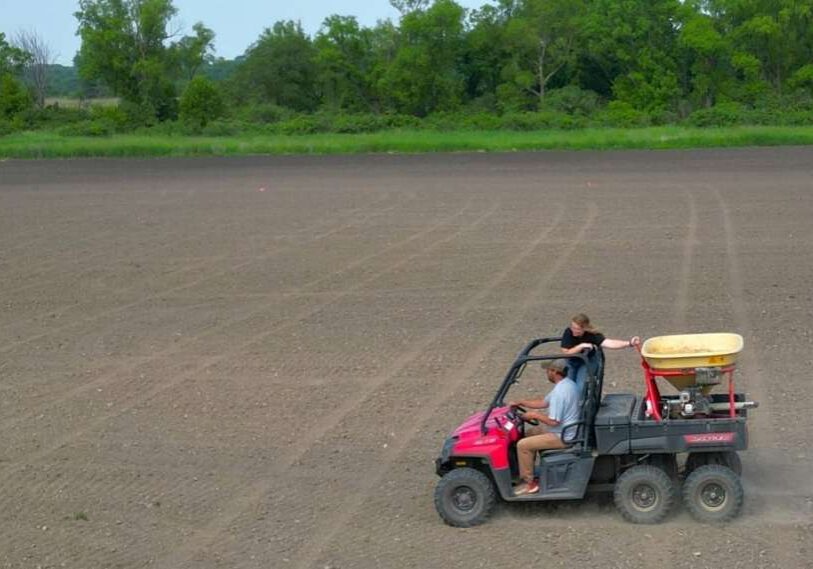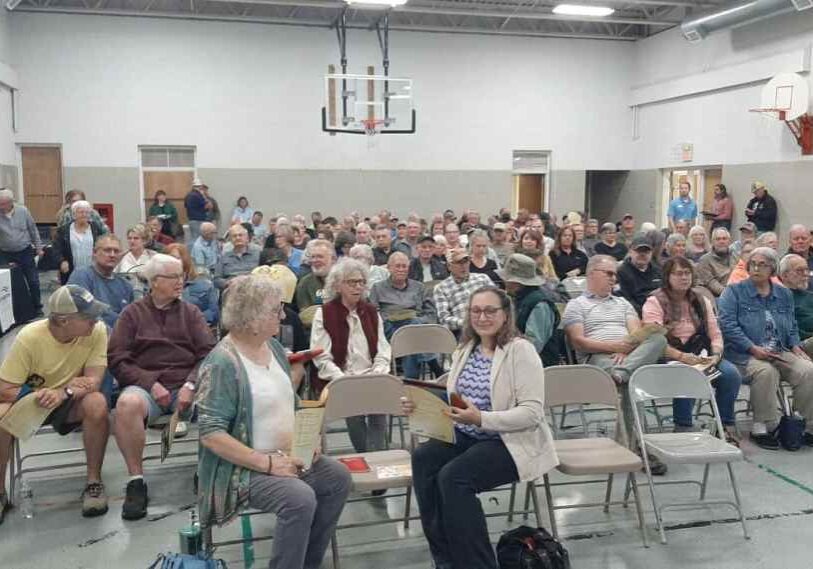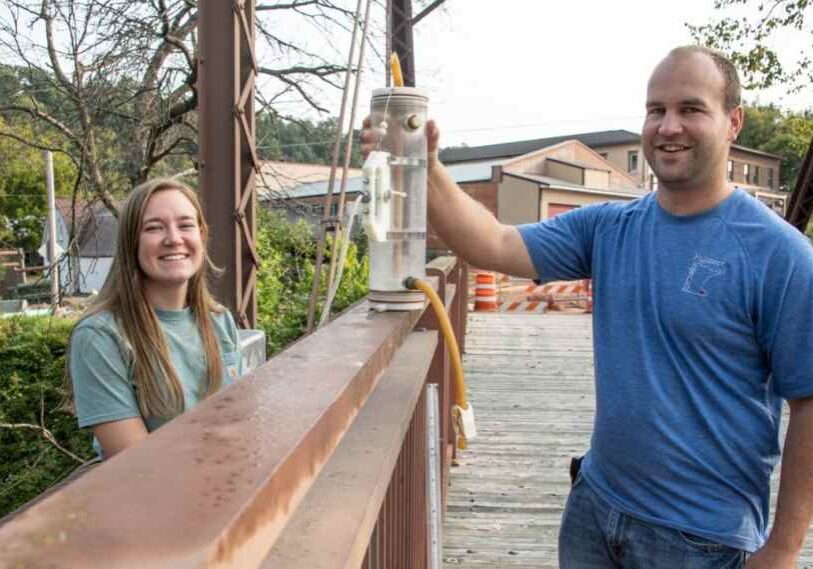Group Attempts to Make Preston to Forestville Trail a Reality
Leaders from Preston, Harmony and Lanesboro collaborate with University of Minnesota experts in joint effort

PRESTON – Like many small-town young people, after growing up in his hometown of Preston, Jon DeVries moved away to pursue life in the ‘big city’.
A graduate in Urban Planning from the University of Illinois – Chicago, DeVries’ professional career involved helping develop several public initiatives in the Windy City and beyond. He later was asked to establish a Real Estate and Urban Planning program at Roosevelt University in downtown Chicago.
The “Brain Drain” took people like Jon from rural areas back in the day, but a longing for a simpler life is bringing many like him back to small town America. Rural Sociologist Ben Winchester at the University of Minnesota refers to it as A Rural Brain Gain Migration, with people bringing resources, expertise and know-how to their new hometowns.
DeVries is an example of this, using his planning skills to lead an initiative by the Preston Historical Society to finish the Preston to Forestville State Trail, which was never completed. He has put together a coalition of local community leaders, University of Minnesota experts, and state agencies to find solutions around issues that prevented the trail’s completion years ago.
DeVries is joined by other Preston “Brain Gain Migrants” such as Kerry Soiney and Alison Bunge Leathers, who have returned home and are active members of the historical society.

Representatives of the University of Minnesota’s Empowering Small Minnesota Communities (ESMC) program joined Preston Historical members in touring the Root River Trail. Pictured from left are Alison Bunge Leathers, Kerry Soiney, Ursala Lang (ESMC), Bob Storlie (Forestville State Park), Matt Eidem (Historic Forestville) and Andi Sutton (ESMC). (Photo by Jon DeVries)
The Preston to Forestville State Trail Master Plan was originally created in 2003. Its plans were designed to connect the Root River and Harmony-Preston Valley State Trails to Forestville/Mystery Cave State Park via the city of Preston. The trail would begin at Preston’s Trout Run Trail and end at Historic Forestville.
But the ten-mile trail was never completed after the courts upheld landowner challenges to the use of eminent domain in acquiring trail rights-of-way across private property. Consequently, a short trail spur was built west of Preston that has the potential to link up with a future trail to Forestville.
The Preston Historical Society has been named a participant in the Empowering Small Minnesota Communities Program (ESMC) at the University of Minnesota. This is an effort to support small communities with university research resources to help them realize their infrastructural goals and to develop strategies to move the community forward socially, economically and environmentally.
The historical society is working with the Minnesota Design Center and the UM-Extension’s Southeast Regional Sustainable Development Partnerships (RSDP) on the trail project. The ESMC team will provide expertise on design options, funding sources, construction costs, state resources, environmental impacts and development strategies.
A three-community committee has been formed to collaborate on planning with the university that includes members from the trail towns of Preston, Lanesboro and Harmony. It is believed that opening up trail links to Forestville State Park and Mystery Cave will benefit all three towns as well as the park and Historic Forestville. More than 24,000 people visited Forestville/Mystery Cave in 2024.
As Lanesboro Mayor Alicia Pearson said at a recent planning meeting, “If one town rises, we all rise.”

It is anticipated that Historic Forestville will see increased traffic to its site once the Preston to Forestville State Trail is completed. (Photo by John Torgrimson)
The project began this past February with an ESMC tour of the Preston riverfront and Root River State Trail that included meetings with Preston Historical Society members, Forestville State Park staff, Andi Sutton of RSDP and Ursala Lang, Research Fellow at the Design Center. Lang called the collaboration “a coordinated infrastructure effort that will explore future opportunities.”
In a phone interview with DeVries and this reporter, Design Center Research Fellow Daniel Handeen said he was impressed with how much work had already been done on the project.
“For most projects we (Design Center) would be coming in and doing 10 to 15 percent of the initial work you have already prepared — holding community meetings, developing a plan, identifying partners that you can interact with for resources — and you have done this so completely,” Handeen said. “We may end up just playing a supportive role in this project.”
Planning will identify feasible routes to the park, coordinate with DNR trail engineering, and gather community and landowner input. Consideration of environmental impacts, tourist visitation, economic spending and recreational benefits will be included in the research.
No use of eminent domain
The Preston Historical Society has emerged in recent years as a driving force in Preston’s future development. The group has led a two-year effort in developing a Preston Historic Campus & Riverfront Master Plan and construction is underway on the Preston Depot Museum across from the restored Milwaukee Road Elevator and railroad display.
The group also sees the completion of the Preston to Forestville State Trail as another dimension in creating opportunity for the town and area.

The Preston Historical Society has been a driving force in the city’s development. Construction is underway on the Preston Depot Museum across from the restored Milwaukee Road Elevator. (Photo by John Torgrimson)
Jon DeVries made it clear at a May meeting in Preston that there would be “no use of eminent domain” in building the trail. “That is off the table from the beginning,” DeVries said. “We want to create an atmosphere of cooperation.”
But challenges lie ahead. After the Minnesota Legislature allocated $6 million for the Preston-to-Carimona segment of the trail which couldn’t be completed within the mandated timeframe, $4 million of the original $6 million was reallocated to build a Harmony-to-Iowa trail extension. The remaining $2 million is currently being used for engineering and land acquisition for the Preston-to-Carimona segment.
Local planners are hoping a future legislature will reallocate the original $4 million to undertake the trail construction from Preston to Carimona as well as additional funds for Carimona to Forestville.
“The focus of the ESMC effort is to address the remaining issues for the trail between Carimona and Historic Forestville and the state park,” DeVries remarked.
The original trail plan to go from Preston to Carimona and on to Forestville has design challenges. Several steep slopes in excess of five-degrees exist along the planned route, creating compliance issues with the American Disabilities Act (ADA). This will require re-engineering portions of the trail.

The original trail map from the Preston to Forestville State Trail Master Plan, August 2003.
The Design Center will explore alternative route options, including building segments of the trail on the south side of the Root River. Recent legislation creating a 30-foot buffer between land and the river may create an opportunity for 10-12 feet of it for trail use.
“We want to look at the two or three most viable routes for the Carimona-to-Forestville Park segment,” DeVries added.
Close collaboration is planned within Minnesota DNR – Forestville and the Historic Forestville staff – both of whom see benefits in having the trail extended. Study completion is anticipated in fall 2025 and the final report will be shared with the public, local governments, state agencies, legislative representatives, local landowners and community members to facilitate cooperation and funding for trail completion.
“This could be a very important addition to the Minnesota state trail system and the health of the southeast region when completed,” DeVries said.
“Reaching Forestville State Park on the west and implementing the Preston Historic Campus & Riverfront master plan on the east will be perfect bookends for this long-delayed project.”
Jon DeVries explains the planning group’s goals in this video:
Related stories from Root River Current:






